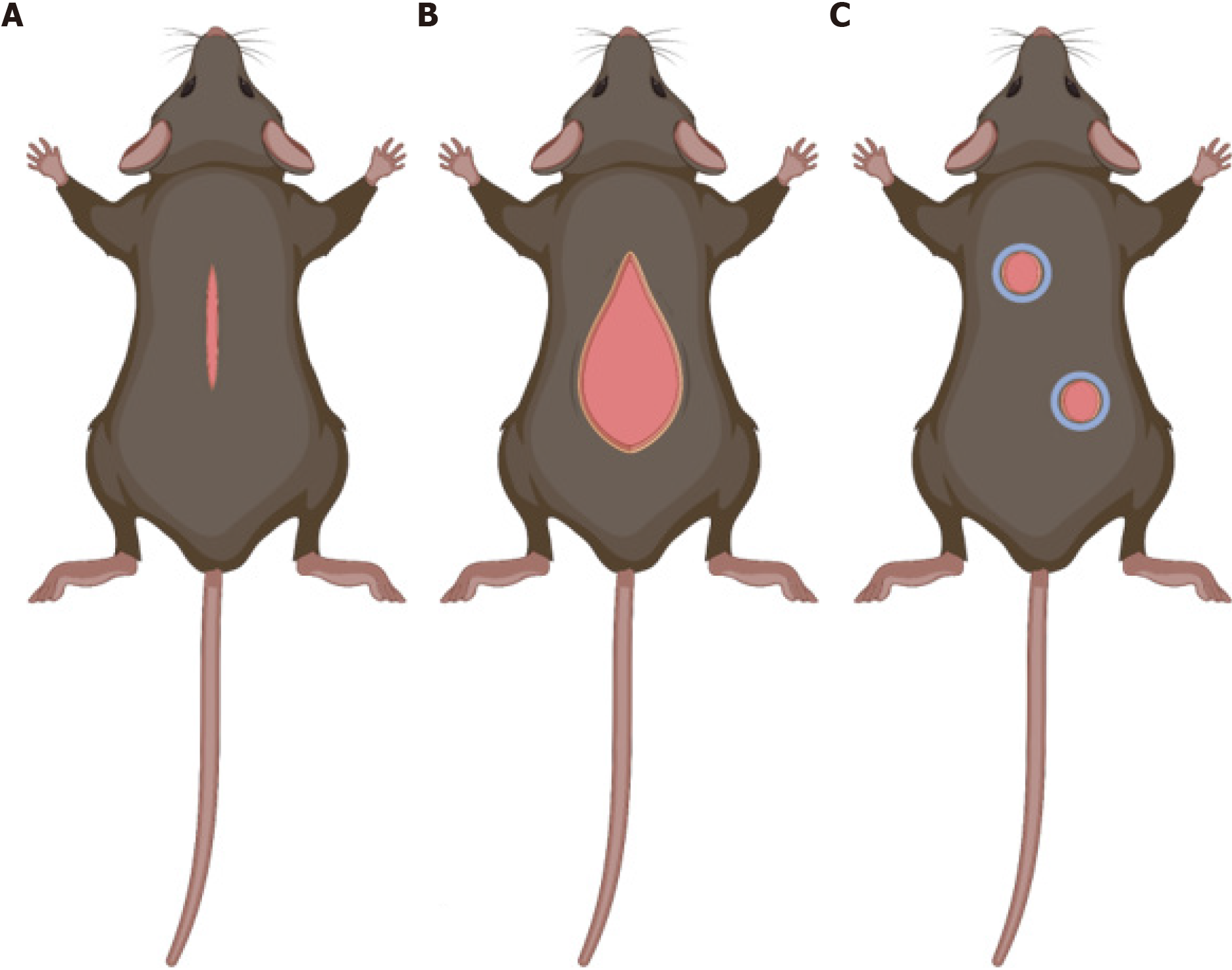Copyright
©The Author(s) 2024.
World J Exp Med. Mar 20, 2024; 14(1): 86898
Published online Mar 20, 2024. doi: 10.5493/wjem.v14.i1.86898
Published online Mar 20, 2024. doi: 10.5493/wjem.v14.i1.86898
Figure 4 Schematic of three major models of wound healing.
A: Hypertrophic wound model. This model allows for use of a device to produce constant tension in the wound bed to produce healing with a hypertrophic scar similar to what is seen in areas of high tension on the body; B: Wound-induced hair follicle neogenesis model. This model is used to investigate regeneration in the setting of large full-thickness trauma; C: Excisional wound model. This model is the most commonly used model to study wound healing and is popular for its ability to investigate the role of various therapeutics to augment wound healing in a similar manner to what is seen in human skin. Produced using BioRender.com.
- Citation: Cotterell A, Griffin M, Downer MA, Parker JB, Wan D, Longaker MT. Understanding wound healing in obesity. World J Exp Med 2024; 14(1): 86898
- URL: https://www.wjgnet.com/2220-315x/full/v14/i1/86898.htm
- DOI: https://dx.doi.org/10.5493/wjem.v14.i1.86898









